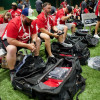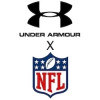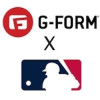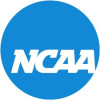10 Suppliers Salute the WWUA with the Best Apparel and Most Protective Gear for the 11th Annual Academy

Jun 23rd, 2025
In the 11th year of the WWUA, best brands outfit Warriors with the best gear and apparel!

Jun 23rd, 2025
In the 11th year of the WWUA, best brands outfit Warriors with the best gear and apparel!

May 28th, 2025
You save $10 and NB sends $5 to WWUA! New Balance's support for Wounded Warrior Umpire Academy carries on in 11th session with plate and base umpire shoe annual donation plus more!

Apr 22nd, 2025
Under Armour receives official footwear and glove supplier designation from the NFL.

Apr 22nd, 2025
G-FORM receives official supplier designation from the MLB.

Apr 9th, 2025
THE cap of the summer is here! UMPS CARE Charities Stars & Stripes Cap is back for the 4th consecutive season!

Apr 3rd, 2025
Umpire Clinics & Umpire Camps in the United States along with information, dates and links to register.

Mar 26th, 2025
Ever been told to open your field of vision or jeered at to use your good eye? The Ump Eye Optical Vision Enhancer, Ump Eye for short, is the latest mask accessory that will have you seeing more of the field than ever before!

Mar 19th, 2025
Join us as we bring relief donations for sport officials affected by California Wildfires.

Mar 18th, 2025
Team up with us as we match relief donations for sport officials affected by Hurricane Helene and Hurricane Milton.

Jan 27th, 2025
Golf and gear make for a great time at the annual charity scramble in Phoenix, Arizona. $600 raised by MLB Umpire Signed Mizuno Pro Wave Plate Shoes for UMPS CARE Charities!

Jan 16th, 2025
Mizuno expands their product line to include umpire pants and traditional short sleeve umpire shirts.
Jan 7th, 2025
There has never been more options for umpire mask harnesses on the market then there are now. With these options, you are more in control of your umpire mask look and functionality. Let us guide you to which umpire mask harness is best for you.

Dec 16th, 2024
After a significant number of requests for a tapered base pant of its popular poly spandex umpire pants, Smitty delivered. Available in pleated and flat-front, these pants are ultra-tapered and have a shorter rise for the fittest look in the market and on the field.
Dec 16th, 2024
A guide through umpire pant colors, best for the Plate or Base umpire, pleated or flat fronts, fabric, fitted or expanding waistband, and care.
Nov 19th, 2024
Athletic or Tapered? Pleated or Flat Front? Western or Slash pockets? We help you choose the best Basketball Referee pants for you.

Nov 11th, 2024
Two of our umpire apparel brands are Veteran-owned and operated. Join us in recognizing them on this Veterans Day!

Nov 10th, 2024
See how you can use the updated RefSmart Timer on NCAA and College baseball fields this season.
Nov 7th, 2024
Find the best basketball referee shoes for you based on your preferences - comfort, look, sizes and durability.

Nov 5th, 2024
Father - Son NBA referee team Joe and JB DeRosa behind the Smitty Court Maxx Basketball Referee Shoes.

Oct 31st, 2024
Introducing, the Discbands Wrestling Officials Alternate Choice Red and Green Wristbands. This 2-in-1 product innovation incorporates colored discs inside your wristbands.
| page 1 of 15 | next page |